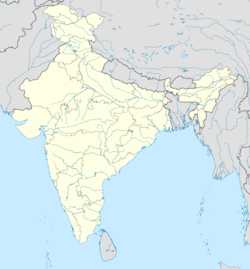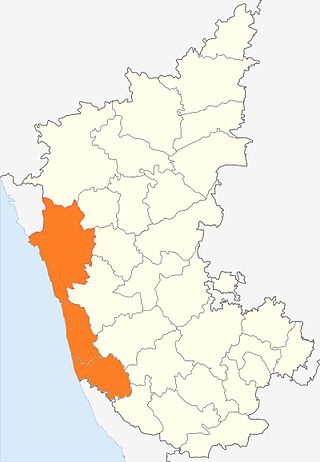
Kanara or Canara, also known as Karavali is the historically significant stretch of land situated by the southwestern coast of India, alongside the Arabian Sea in the present-day Indian state of Karnataka. The subregion comprises three civil districts, namely: Uttara Kannada, Udupi, and Dakshina Kannada. Kassergode was included prior to the States Reorganisation Act.

Konkani is an Indo-Aryan language spoken by the Konkani people, primarily in the Konkan region, along the western coast of India. It is one of the 22 scheduled languages mentioned in the Indian Constitution, and the official language of the Indian state of Goa. It is also spoken in Karnataka, Maharashtra, Kerala, Gujarat as well as Damaon, Diu & Silvassa.

The history of Goa dates back to prehistoric times, though the present-day state of Goa was only established as recently as 1987. In spite of being India's smallest state by area, Goa's history is both long and diverse. It shares a lot of similarities with Indian history, especially with regard to colonial influences and a multi-cultural aesthetic.

Salcete is a subdivision of the district of South Goa, in the state of Goa, situated by the west coast of India. The Sal River and its backwaters dominate the landscape of Salcete. Historically, the sixty-six settlements south of the Zuari River formed the original Salcette territory. Salcete forms a part of the bigger Konkan region that stretches along the western shoreline of peninsular India.

Arthur Coke Burnell was an English civil servant who served in the Madras Presidency who was also a scholar in Sanskrit and Dravidian languages. He catalogued the Sanskrit manuscripts in southern India, particularly those in the collections of the Tanjore court collections. He was, with Henry Yule, a co-compiler of the Hobson-Jobson, a compendium of Anglo-Indian terms.

Western India is a loosely defined region of India consisting of western states of Republic of India. The Ministry of Home Affairs in its Western Zonal Council Administrative division includes the states of Goa, Gujarat, and Maharashtra along with the Union territory of Dadra and Nagar Haveli and Daman and Diu, while the Ministry of Culture and some historians also include the state of Rajasthan. The Geological Survey of India includes Maharashtra but excludes Rajasthan whereas Ministry of Minority Affairs includes Karnataka but excludes Rajasthan.
Goan Catholics are an ethno-religious community of Indian Christians adhering to the Latin Rite of the Catholic Church from the Goa state, in the southern part of the Konkan region along the west coast of India. They are Konkani people and speak the Konkani language.
Loutolim or LoutulimLottli pronounced:, Portuguese: Loutulim) is a large village of South Goa district in the state of Goa, India. It is an important settlement in the Salcete sub-district.
Goans is the demonym used to describe the people native to Goa, India, who form an ethno-linguistic group resulting from the assimilation of Indo-Aryan, Dravidian, Indo-Portuguese, Austro-Asiatic ethnic and/or linguistic ancestries. They speak different dialects of the Konkani language, collectively known as Goan Konkani. "Goanese", although sometimes used, is an incorrect term for Goans.
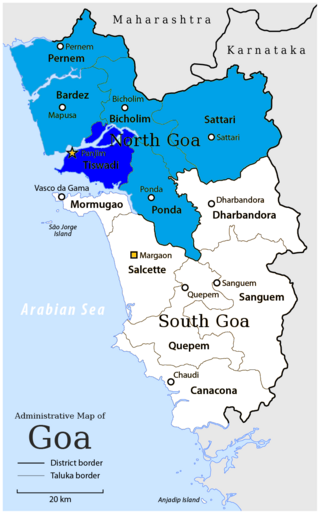
Tiswadi, formerly known as Ilhas, is a taluka in the district of North Goa, situated in the Indian coastal state of Goa. It is an estuarine island situated on the confluence of the Mandovi and Zuari rivers. It was one of the first territories to be annexed by the Portugese in the 16th century. Both the state capital Panaji, and the erstwhile capital Old Goa lie within the sub-district. It is the biggest and the most populated of the six major islands between the Mandovi and Zuari rivers.
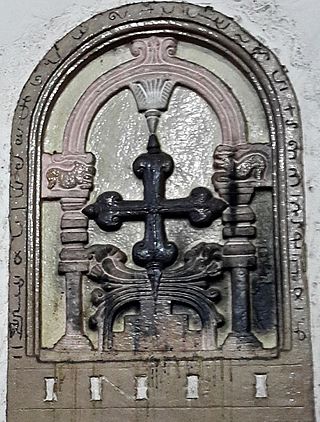
Mar Thoma Sleeva (Saint Thomas Cross) are ancient crosses associated with the community of Indian subcontinent, who trace their origins to the evangelism of Thomas the Apostle in the 1st century AD. The Saint Thomas Christians, which is one of the oldest Christian communities of the world, survive in the Malabar region in state of Kerala, India and have a diaspora in other parts of the Indian subcontinent. Saint Thomas Christian crosses are known as Mar Thoma Sleeva (Saint Thomas cross), Indian cross, or Persian Cross in English, as well as Nasrani Sthambam in Malabarese.

Mar Sabor and Mar Proth, according to Syrian Malabar Christian tradition, were two Chaldean Assyrian bishops who landed in the port of Kollam by the help of a Nestorian merchant, Sabr Iso in 823 AD. The mission is said to have received permission from the then king of Kerala to build a church in Kollam.

Goykānaḍī or Kandavī is a Brahmic script that was once used in the territory of Goa to write Konkani and sometimes Marathi in the Konkan coast. Similarly, it was used by the trading Saraswat and Daivajna families along with the Modi script to maintain their accounts.

Canarese Konkani are a set of dialects spoken by minority Konkani people of the Canara sub-region of Karnataka, and also in Kassergode of Kerala that was part of South Canara.
Hubert Olympus Mascarenhas, born in Porvorim, Goa, in 1905, died at Mumbai, on 9 February 1973, was a Catholic priest belonging to the Archdiocese of Bombay, indologist of repute, and nationalist.
Christianity in Goa has pre-Portuguese roots, according to a few scholars such as H.O. Mascarenhas and Jose Cosme Costa. These roots are probably the same as those of the Saint Thomas Christians or Nasranis of Kerala.

The Zuari Bridge is a bridge between North Goa and South Goa, India. It carries the NH 66 over the tidal part of the Zuari River, between the villages of Agaçaim and Cortalim. It is a few metres downstream of the Konkan Railway Bridge.

Goa is a state on the southwestern coast of India within the Konkan region, geographically separated from the Deccan highlands by the Western Ghats. It is bound by the Indian states of Maharashtra to the north, and Karnataka to the east and south, with the Arabian Sea in the west. It is India's smallest state by area and fourth-smallest by population. Goa has the highest GDP per capita among all Indian states, two and a half times as high as the GDP per capita of the country as a whole. The Eleventh Finance Commission of India named Goa the best-placed state because of its infrastructure, and India's National Commission on Population rated it as having the best quality of life in India. It is the second-highest ranking among Indian states in the human development index.

Goa Velha is a small town in Ilhas de Goa subdistrict, Goa state, India. It should not be confused with the World Heritage Site of the historical city of Old Goa. St Andrew's is its parish church. It is well known for its yearly 'Procession of the Saints'
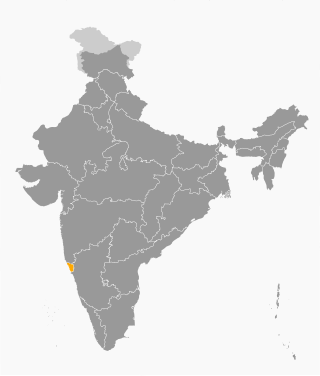
The following outline is provided as an overview of and topical guide to Goa:


